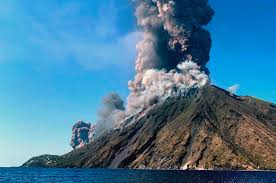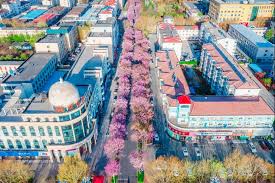Italy: The Island of everlasting fire

Rome: Cast off the northern coast of Sicily, the blustery island of Stromboli is home to around 300 full-time residents, two villages and one incredibly volatile volcano. For nearly 90 years, this rumbling, grumbling 12-sq-km speck of land in the Tyrrhenian Sea has been erupting almost continuously. In fact, its fountain-like spews of molten rock are so distinctive that geologists use the term “Strombolian” to describe similar volcanic eruptions around the world.
Stromboli is the most remote of Italy’s seven Aeolian Islands and an arresting sight: its perfectly conic mountain rises 924m from the cobalt sea and extends more than 1,000m below.
The island hasn’t always been so active or so sparsely populated. In the early 1900s, around 4,000 people lived here. But after a major eruption and consequent tsunami in 1930, the majority of the island’s residents departed for the US and Australia. When the volcano began to erupt almost continuously a few years later, the population dwindled, and by the late 1940s only around 15% of the island’s residents remained. In 1950, however, director Roberto Rossellini’s film Stromboli, starring Ingrid Bergman, put the island’s smoking silhouette back on the map, drawing visitors once again to the islet’s rocky shores.
In her 2019 Elba Film Festival award-winning documentary, Island of Fire, BBC’s Anna Bressanin takes viewers inside the lives of the people who call Stromboli home, exploring the complex reasons why they choose to live on one of the most active volcanoes in the world. Locals, who are used to living with the audible rumbles of the volcano, call it “iddu”, meaning “he” in Sicilian. “He’s like a friend, like a person,” said 12-year-old Federico D’Ambrosio. Many locals believe that there is happiness in accepting the power of nature, and in the vulnerability of life.
Today, Stromboli is one of the world’s most visited volcanoes, and tourists will often embark on a three-hour hike to view its primordial beauty from the edge of its crater. But this summer, two major explosions shook the island, killing an Italian hiker and causing 70 people to be evacuated.
For local children used to the island’s off-season emptiness, tourism during the busy summer months means learning to navigate their bikes through crowded streets and playing the occasional prank on unsuspecting visitors. Few children reside on Stromboli, and those who do must leave the island to attend high school, as the island does not have one of its own.
Even after leaving for school and work, several islanders in Bressanin’s documentary say they were drawn back to their molten origins. “I have left only to come back,” said one of the young men. Other residents speak fondly of spending almost their entire lives on the volcano. For the people of Stromboli, home is a force best captured in a quote from Rossellini’s film: “What mystery, what beauty.”





